Have you ever seen a toe-biter or a mayfly magnified to 30 times its normal size? Have you examined the root of an onion so closely that you could observe cells dividing in its root cap? Have you gotten a bee’s view of pollen on a flower stamen? If so, odds are that you’ve been to a Saturday Scientists program at the Morro Bay Museum of Natural History.
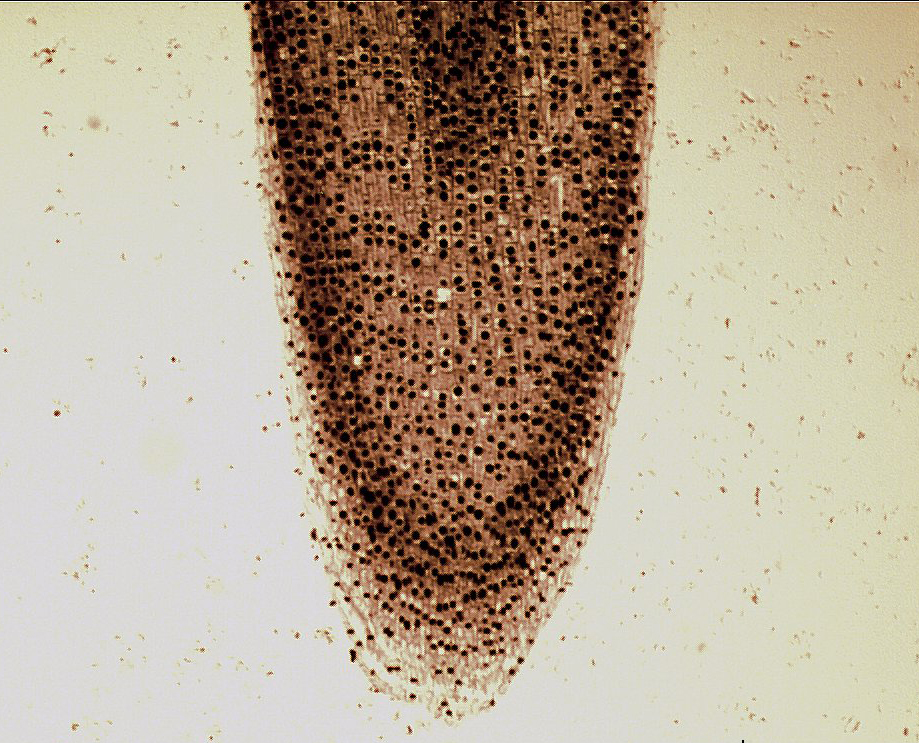
Saturday Scientists has been an institution at the museum for the past four years. These engaging two-hour-long programs draw in curious locals and visitors alike to examine specimens from the natural world up close.
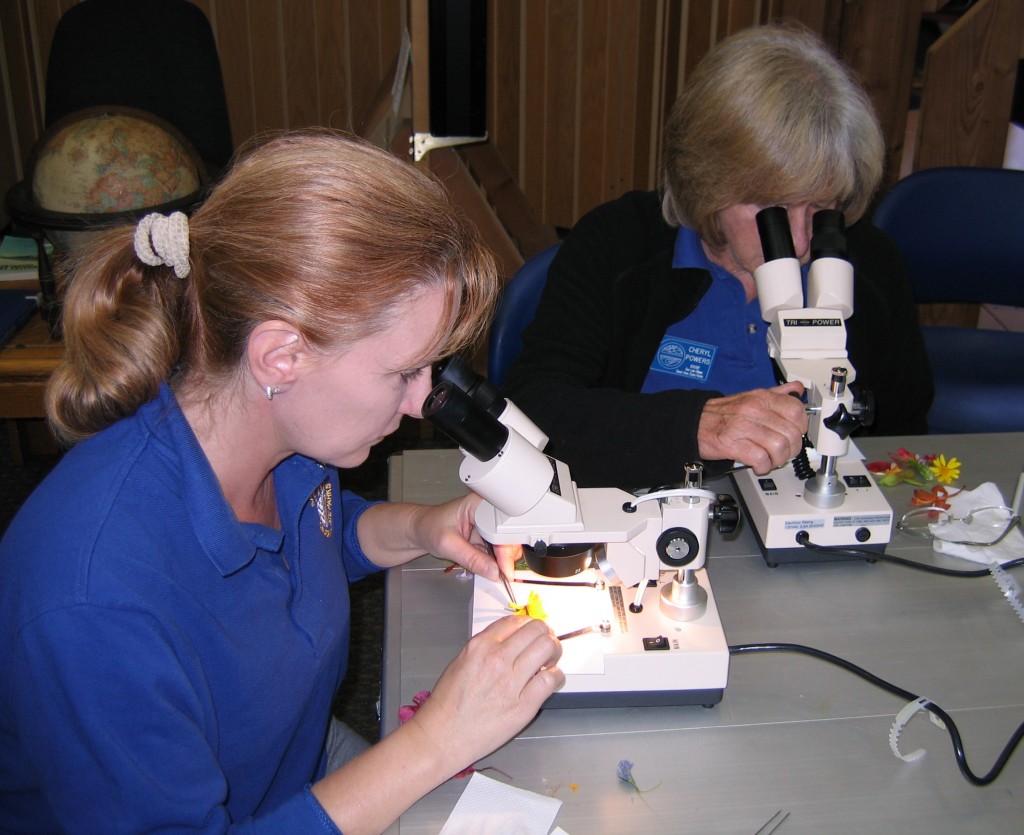
At the most recent Saturday Scientists, called “We Dig Roots,” participants listened to an engaging talk about roots by Docent Barb Renshaw. Barb explained that roots are the first part of a plant that breaks out of the seed in order to seek water and nutrients. She discussed how growing plants use roots for stability and as storage devices.
Then, she revealed the properties of several native plants’ roots, including soap lily, which has been used for cleaning purposes and for stunning fish in order to catch them more easily. After the presentation, Docent Karen Watts taught everyone how to use a dissecting microscope before turning them loose to play and learn.
There was an entire table full of fresh plants and roots to choose from, as well as pre-loaded slides ready to admire on the high-powered microscopes.
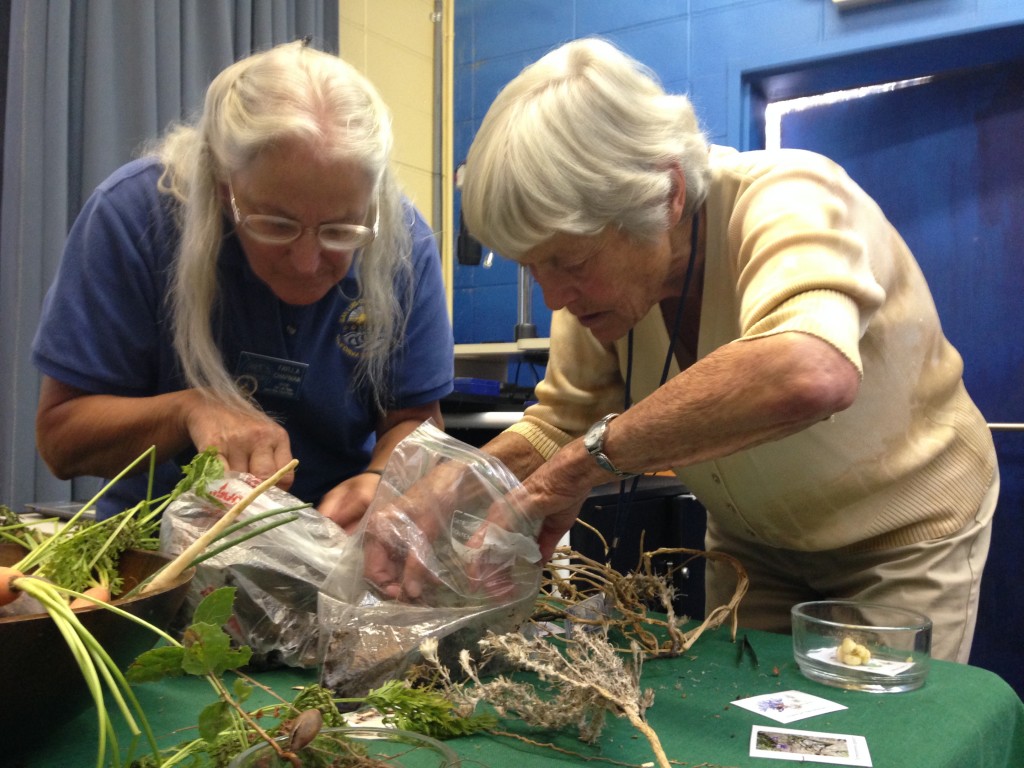
The room was full of people eagerly powering up the microscopes, swapping samples, and alternating between silent wonder and gasps of “wow!” While admiring the beauty of a Dichelostemma bulb, one participant mentioned that she’d love to draw or paint what she was seeing through her microscope. She actually went home and bought a microscope online so she could do just that!
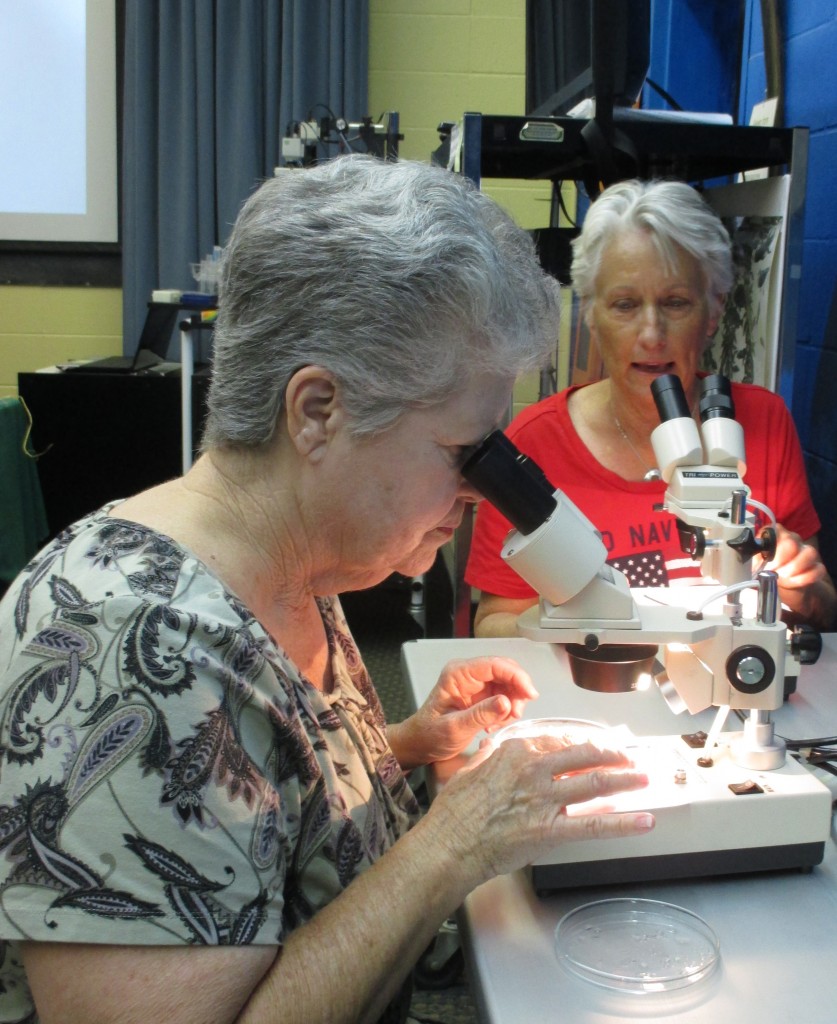
Even if you don’t have a microscope at home, you’re in luck. Barb Renshaw leads another program called Sketching through the Scope, often during rainy winter weekends. Participants can look at samples under the microscope, sketch or paint what they see, and go home with a unique work of art.
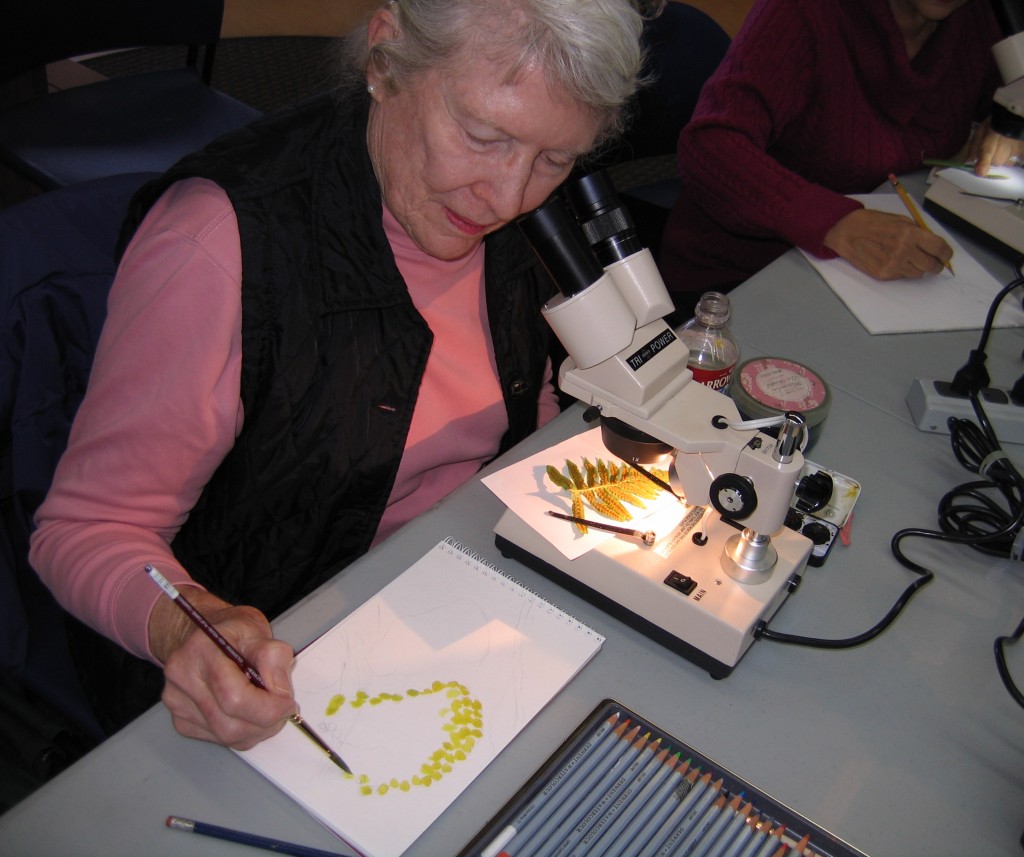
These Saturday Scientists classes are special because of the deep love and knowledge that the docents bring to the subjects they explore. Many of the docents who participate in Saturday Scientists (a 20-person group that contains at least 10 presenters) are retired science teachers. They love to share the natural world with curious people, and they schedule the programming six months in advance so that they have plenty of time to prepare.
Cheryl Powers, a retired high school biology teacher of 44 years, says she is always looking for neat things to add to her presentations. She also appreciates the challenge of “designing programs that appeal to all ages—seniors, children, and students.” Her program on worms was a real hit—especially the huge live earthworms.
Karen Watts, who organizes the Saturday Scientists group, says she loves it because, “It’s so easy to engage people. It’s never a disappointment [because] it opens up a new world.”
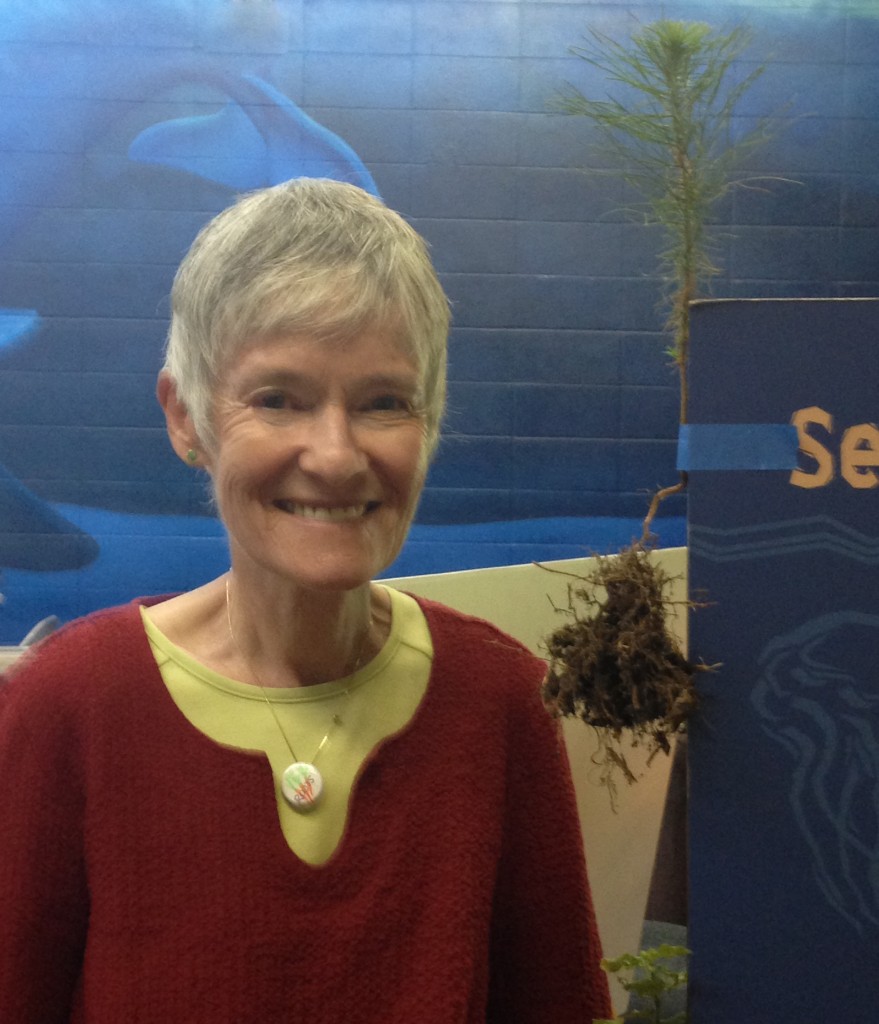
The museum is currently setting up an upgraded digital microscope system that will make it even easier for docents to give participants a new perspective. It allows the docents to project high-power, high-resolution images onto a large hanging screen in color. This new microscope comes equipped with a powerful camera that can capture quality images and video for later reference. The Estuary Program was happy to support this upgrade through a community grant to the museum.
Here’s a look at what the new microscope can do!
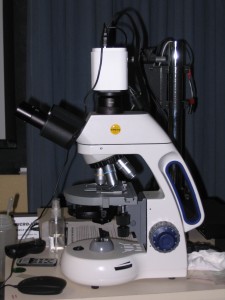
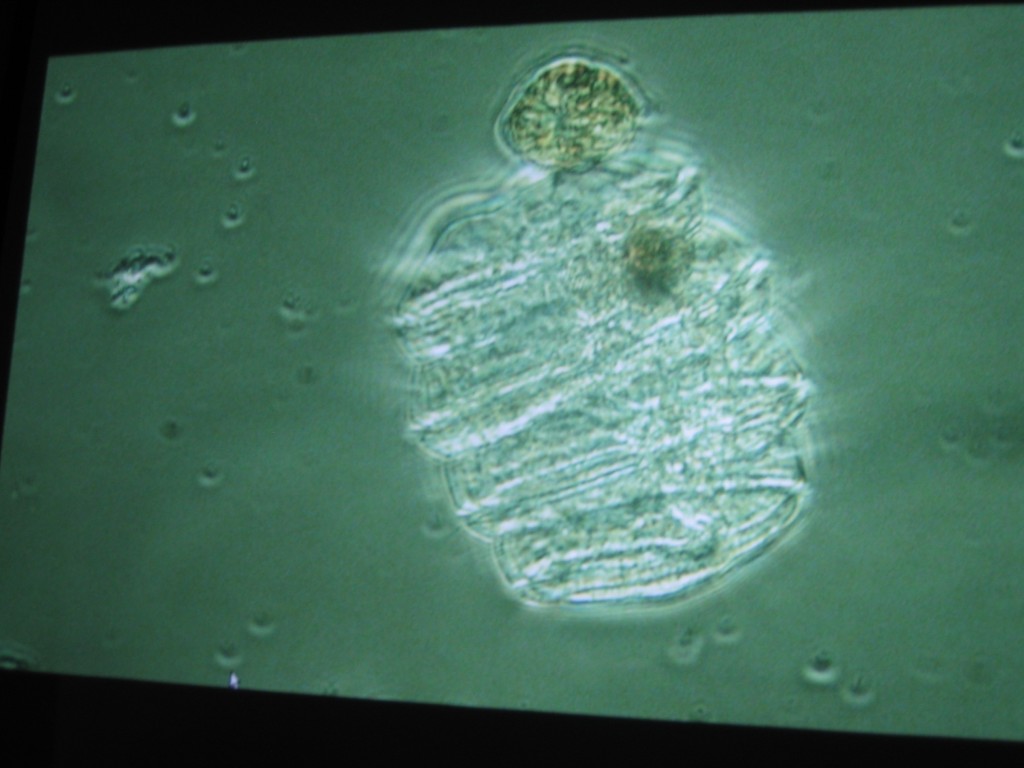
Want to be a Saturday Scientist?
Saturday Scientists take place every third Saturday at the Morro Bay Natural History Museum from 2:00 to 4:00 p.m. The next one on August 15, presented by Docent Jerry Kirkhart, will examine “Leaves—Inside and Out” using the new microscope setup. Don’t miss it!
Other upcoming Saturday Scientists topics include:
- Flying Things, Feathers, and Wings,
- Lichens,
- Mayflowers,
- Belly Biology,
- Insects,
- Sand and Sediment,
- Nature’s Coverings, where participants examine fur and skin,
- Butterflies,
- Worms,
- Fungi, and
- Aquatic Invertebrates
You can find more information on Saturday Scientists and other offerings at the museum on the Central Coast State Parks Association’s website.